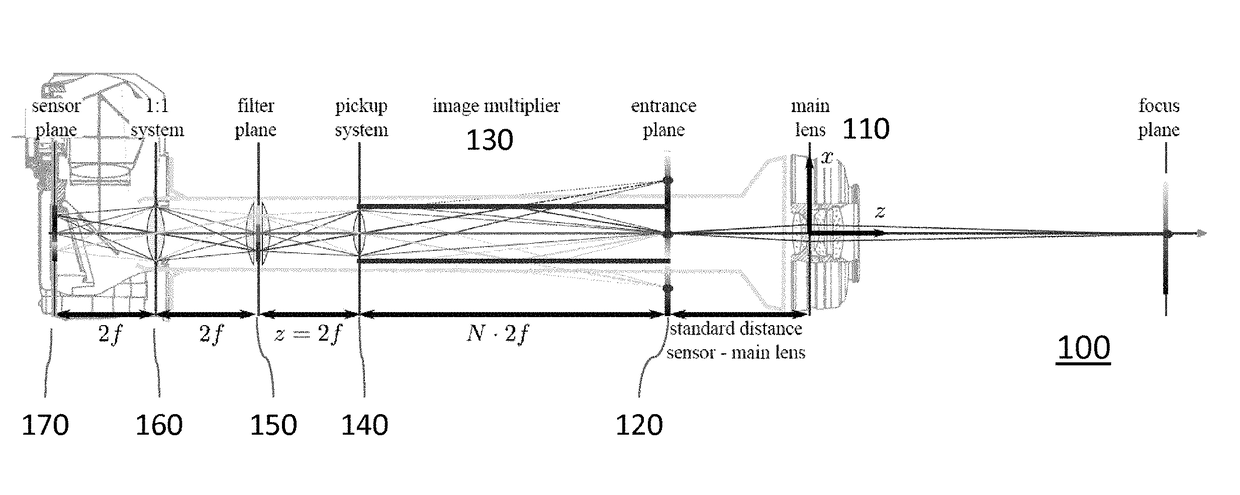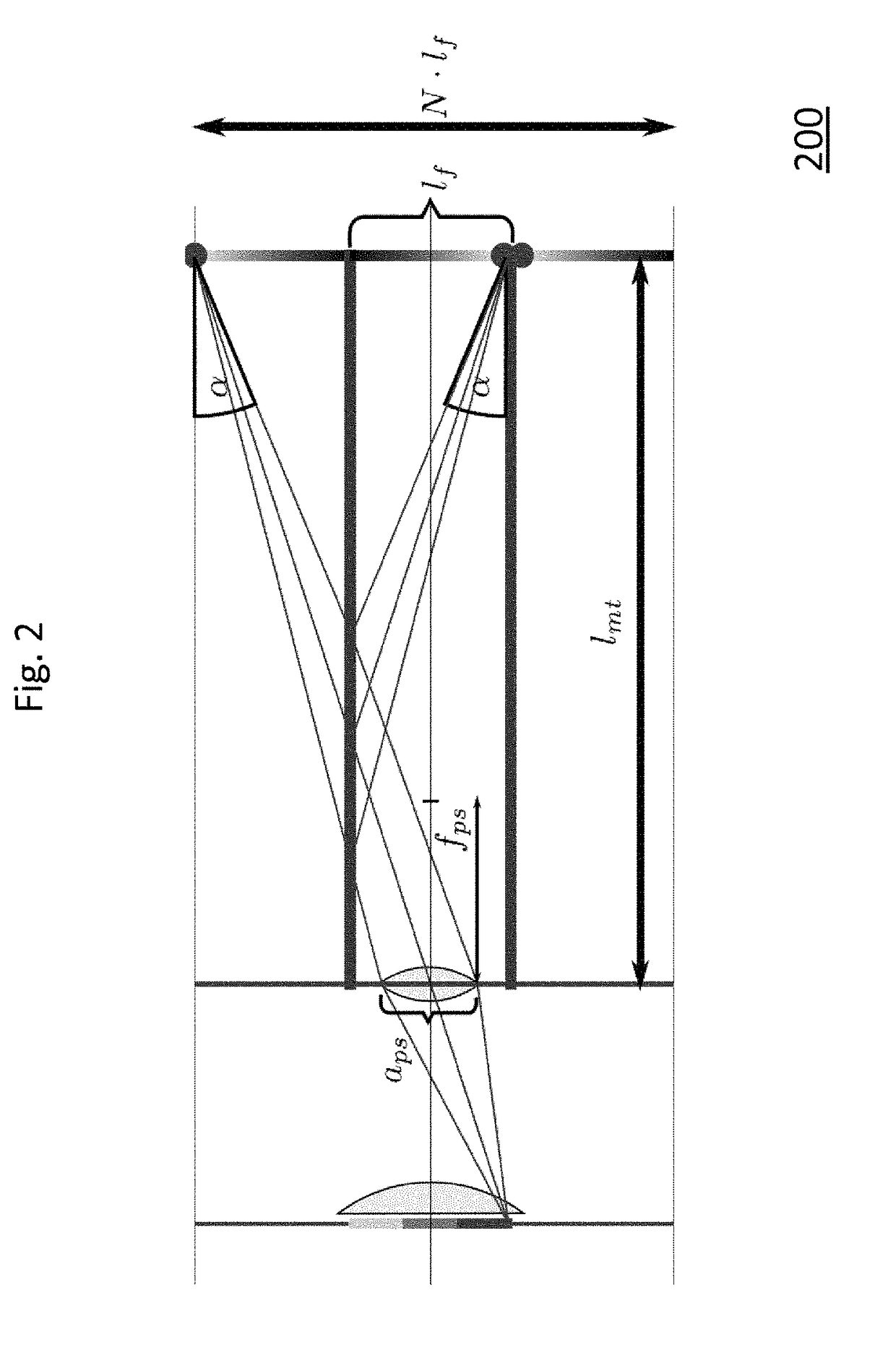Plenoptic imaging device
a technology of optical imaging and plenum, which is applied in the field of plenum imaging devices, can solve the problems of limited utility, poor inversion step, and inferior throughpu
- Summary
- Abstract
- Description
- Claims
- Application Information
AI Technical Summary
Benefits of technology
Problems solved by technology
Method used
Image
Examples
first embodiment
[0033]FIG. 1 shows a schematic overview of a plenoptic imaging device according to the invention.
[0034]The original image of the standard camera lens 110 is projected on a diffuser screen 120 that is placed in the location that would usually be occupied by the cameras sensor. This diffuser 120 is observed through an image multiplier 130, e.g. a mirror arrangement, which produces a number of copies of the original image that still carry the physical information of the plenoptic function, except for directional light variation. A pick-up imaging system 140 projects the information exiting the mirror system on a filter plane 150. This projected image on the filter plane 150 has the dimensions of the original sensor, but contains spatially separated copies of the original image. These copies can be individually modulated by optical filters placed in the filter plane, hereby, enabling, among others, snapshot high dynamic range, multispectral, and polarization imaging. It would be possibl...
second embodiment
[0051]FIG. 3 shows a design for an imaging device according to the invention that can be used for light-field imaging. Here, the filter plane and the 1:1 imaging system of the filter-based design are omitted and the output of the pickup system is imaged directly onto the sensor. The light-field imaging effect is based on a subsampling of the main lens aperture [Ng et al. 2005].
[0052]By omitting the diffuser component, one preserves the directionality of the plenoptic function on the entrance plane and can sample it in the sub-images. A difficulty is the divergent nature of the image cast by the main lens onto the entrance plane, see FIG. 4 (a). For clarity, a pinhole-like aperture of the pickup system is shown, including two scene points that are imaged from three directions each. One sees that vignetting occurs; the blue view is completely blocked for the upper scene point whereas the green view is missing for the lower scene point. The problem comes from the mismatch between the e...
PUM
 Login to View More
Login to View More Abstract
Description
Claims
Application Information
 Login to View More
Login to View More - R&D
- Intellectual Property
- Life Sciences
- Materials
- Tech Scout
- Unparalleled Data Quality
- Higher Quality Content
- 60% Fewer Hallucinations
Browse by: Latest US Patents, China's latest patents, Technical Efficacy Thesaurus, Application Domain, Technology Topic, Popular Technical Reports.
© 2025 PatSnap. All rights reserved.Legal|Privacy policy|Modern Slavery Act Transparency Statement|Sitemap|About US| Contact US: help@patsnap.com



